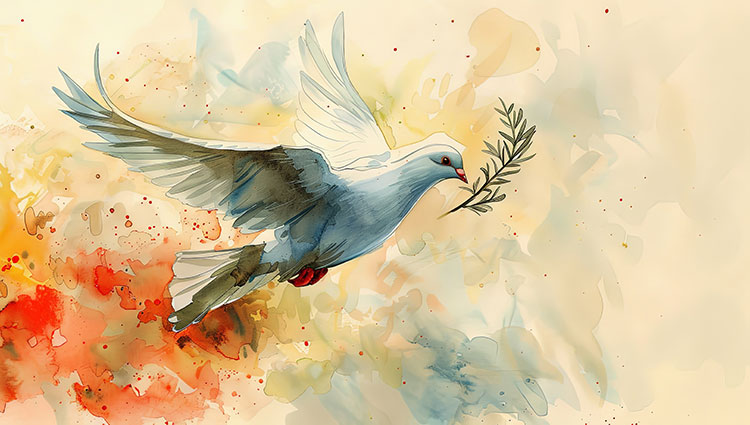Let’s Keep Giving Personal
Why Philanthropy Should Stay Free and Flexible
Imagine you’ve set aside money over the years—maybe you skip a fancy dinner now and then, or put aside a little extra each month—to support causes that speak to your heart. It could be helping a local food pantry, contributing to cancer research, or backing a nonprofit that cleans up neighborhood parks. You’re not a billionaire, but your steady support can add up to a real difference over time. That’s the beauty of donor-advised funds (DAFs). They give everyday people like you and me the chance to shape our charitable giving, both now and in the future.
But a new push, led by something called the Initiative to Accelerate Charitable Giving (IACG), threatens to take away that flexibility. The IACG claims it’ll get more money into the hands of charities sooner, but if you scratch beneath the surface, you’ll find a plan that risks undermining the personal freedom that makes American philanthropy so vibrant.
The Risks to Everyday Donors
In a Wall Street Journal piece titled “The Left Wants a Philanthropy of the Few,” Elise Westhoff points out how the IACG would force DAFs to spend all their funds within 15 years for donors to keep certain tax benefits. At first glance, this might seem like it’s “speeding up” generosity. But consider this: DAFs already give around 20% of their funds to charities each year, beating the 5% annual minimum required of large private foundations. It’s not as if these accounts are sitting idle; they’re often the first responders during crises—think the 2008 financial downturn or the COVID-19 pandemic—when nonprofits need help the most.
If we start imposing arbitrary deadlines, where does that leave us in the next emergency? DAFs won’t be as nimble, and donors won’t be able to plan for future challenges. Instead of empowering people to give on their own terms, these rules box them in. That’s not helping; it’s controlling.
A Double Standard That Hurts the Little Guy
Under these proposed rules, who really comes out on top? Large, well-established foundations like Ford and Hewlett—major supporters of the IACG—remain free to hold onto their funds indefinitely. It’s a familiar story: big government and large organizations protect the powerful while making life harder for everyday Americans. We’ve seen this pattern in other industries—whether it’s tech monopolies squeezing out small startups, oil giants overshadowing family-owned wells, or even in the dating world, where smaller agencies face regulations while the largest players glide by unscathed. Meanwhile, those of us who rely on DAFs—regular people looking to give thoughtfully over time—end up with fewer options and less autonomy.
The result is that big institutions keep all their privileges, while ordinary donors face more rules and fewer choices. If we value a diverse and dynamic philanthropic landscape, this double standard runs completely counter to that goal.
Family Foundations Under Fire
This push doesn’t just affect DAFs. Family foundations—often run by parents, grandparents, siblings, and cousins—are also in the crosshairs. Right now, families who create these foundations can take a hands-on approach, teaching younger generations the importance of giving back, and using their time and resources to tackle causes that mean something to them personally.
But the IACG’s reforms would limit how family members engage in their own philanthropy, banning certain reimbursements or modest stipends. This might sound small, but it’s a big cultural shift: it discourages families from maintaining personal involvement in their charitable efforts. In other words, it makes philanthropy less about relationships, tradition, and passing down the values of generosity and more about rigid compliance with new rules. We risk losing that personal touch that’s at the heart of so many of these family-led endeavors.
Where We Stand Today
The IACG’s ideas sparked the Accelerating Charitable Efforts (ACE) Act—bipartisan legislation designed to “get funds moving faster” but criticized for the same heavy-handed approach. As of now, the ACE Act isn’t law, but the debate isn’t going away. In 2024, the IRS held hearings about the future of DAFs, showing just how heated this topic has become.
Why It Matters
Philanthropy in America has never been reserved for the ultra-rich. It’s woven into the lives of countless folks who give what they can when they can. That freedom and flexibility let us respond to real-world needs as they emerge. We can invest thoughtfully, plan for the long term, or pivot quickly during a disaster.
If we allow complicated rules and time limits to strangle our choices, we lose what makes American philanthropy so special: that personal connection, that sense of initiative, and the belief that everyday people can shape the world for the better.
It’s Not About Government
At the end of the day, philanthropy shouldn’t be about government insiders or giant foundations calling the shots. It should be about empowering all of us—no matter our income level—to give freely, invest in what we believe in, and contribute to the greater good on our own terms.
Instead of imposing new burdens and restrictions, we should celebrate the ways regular Americans already step up to the plate. Keep the rules simple, the options open, and the spirit of giving personal. That’s how we ensure philanthropy stays true to its purpose: helping people help each other, one heartfelt gift at a time.

